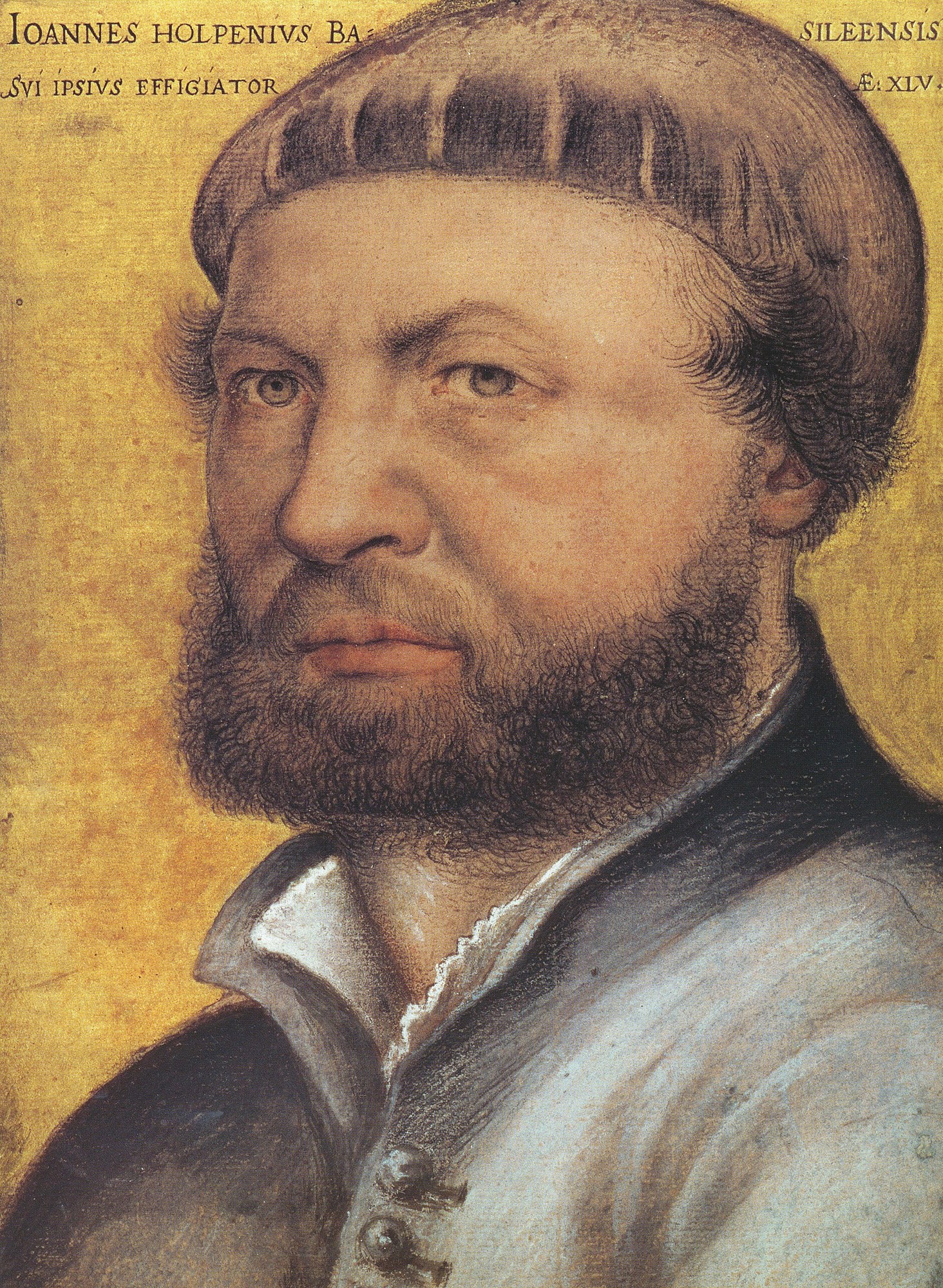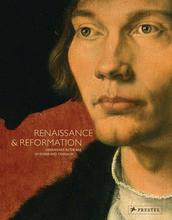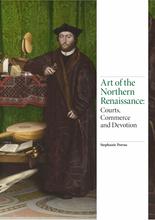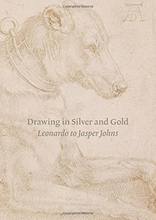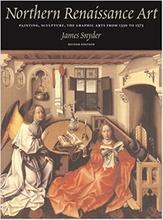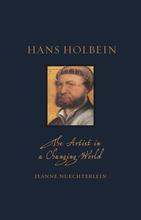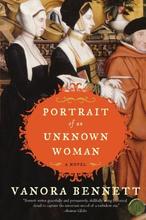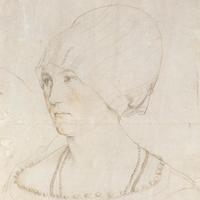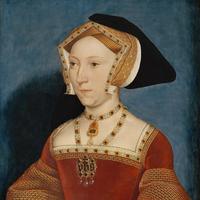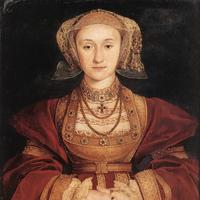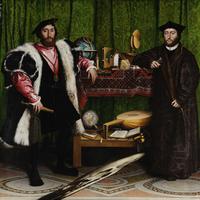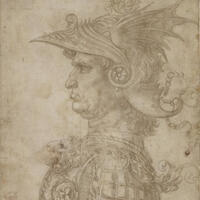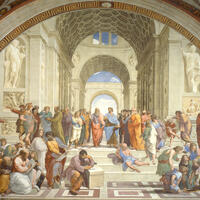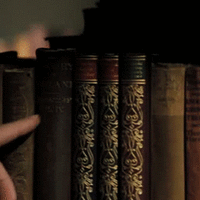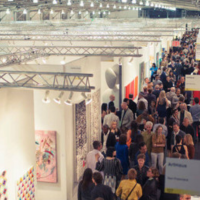More about Hans Holbein the Younger
- All
- Info
- Shop
Works by Hans Holbein the Younger

Sr. Contributor
By luck, the most amazing German painter of his generation. By choice, a huge dick to his wife and kids. By birth, Super Hans.
Hans was part of a straight up painting dynasty. His father was a famous painter. His uncle was a famous painter. His brother was a famous painter (although he died young, so RIP). He had the foresight to be born one generation after Albrecht Dürer, Matthias Grünewald, and Lucas Cranach the Elder, allowing Hans to become the greatest German painter of his generation on a technicality.
Hans painted the first group portrait in Northern Europe where the subjects aren't kneeling. Apparently this controversial move implied impiety and was extremely frowned upon given the whole Protestant Reformation thing going on around the continent. God, who is so very big and large, expected groups of two or more people to get on their knees in His immense presence (which is everywhere). Unfortunately this blasphemous standing portrait of Sir Thomas More and his family is now lost to history.
Hans was constantly abandoning his family to travel for painting commissions. He made a portrait of his wife and children the last time they saw each other, and then immediately went out for cigarettes. That trip to the corner store for a pack of Marlboros led him to England where he lived for 11 years until he died of plague in London. Before he died of plague, Hans basically invented how the English king would be portrayed in portraits.
He and the king had quite the rapport. Of the numerous celebrities to sit for him, King Henry VIII was the only one to like Hans as a person in the end. In addition to painting the English court, Hans played the role of royal fashion mogul by designing a great array of smart and sassy summer ensembles for the king and his crew.
King Henry trusted Hans so much that the painter had the honor, no, the privilege of traveling across the continent to paint the hotties so Henry could pick out the next murdered Queen of England. Hans' portrait of Anne of Cleves moved the King to propose on the spot. Only, and internet daters know how this story goes, she wasn't hot in person. King Henry killed his right-hand man for advocating for the marriage. Hans barely escaped with his life.
His numerous portraits for the court include the one of King Henry VIII that's always seen in high school history textbooks, a portrait called The Ambassadors with a really famous skull that's drunk and needs to go home, and a portrait of a brave man named Sir William Butts. Writing pro-tip: always end on a butt and/or fart joke when possible.

Contributor
Hans Holbein was Bavarian, but worked mostly in Basel, Switzerland and in England.
He was possibly the greatest art phenomenon ever to come out of Basel...although the Art Basel art fair is a pretty big deal as well.
He illustrated Martin Luther’s German translation of the bible, as well as a book by Dutch philosopher Erasmus. Hans also hung out with English philosopher Thomas More, and was court painter for Henry the VIII (‘big Henry’, the one with all the wives). Basically he got to meet anyone who was anyone in the 1520’s and 30’s. He painted over 100 portraits for Henry VIII, and has been called the greatest portrait painter of all time.
One of the largest art supply companies in the world, Holbein Works, Ltd, is named after him. The company is based in Osaka Japan.
Featured Content
Here is what Wikipedia says about Hans Holbein the Younger
Hans Holbein the Younger (UK: /ˈhɒlbaɪn/ HOL-byne, US: /ˈhoʊlbaɪn, ˈhɔːl-/ HOHL-byne, HAWL-; German: Hans Holbein der Jüngere; c. 1497 – between 7 October and 29 November 1543) was a German-Swiss painter and printmaker who worked in a Northern Renaissance style, and is considered one of the greatest portraitists of the 16th century. He also produced religious art, satire, and Reformation propaganda, and he made a significant contribution to the history of book design. He is called "the Younger" to distinguish him from his father Hans Holbein the Elder, an accomplished painter of the Late Gothic school.
Holbein was born in Augsburg but worked mainly in Basel as a young artist. At first, he painted murals and religious works, and designed stained glass windows and illustrations for books from the printer Johann Froben. He also painted an occasional portrait, making his international mark with portraits of humanist Desiderius Erasmus of Rotterdam. When the Reformation reached Basel, Holbein worked for reformist clients while continuing to serve traditional religious patrons. His Late Gothic style was enriched by artistic trends in Italy, France, and the Netherlands, as well as by Renaissance humanism. The result was a combined aesthetic uniquely his own.
Holbein travelled to England in 1526 in search of work with a recommendation from Erasmus. He was welcomed into the humanist circle of Thomas More, where he quickly built a high reputation. He returned to Basel for four years, then resumed his career in England in 1532 under the patronage of Anne Boleyn and Thomas Cromwell. By 1535, he was King's Painter to Henry VIII of England. In this role, he produced portraits and festive decorations, as well as designs for jewellery, plate, and other precious objects. His portraits of the royal family and nobles are a record of the court in the years when Henry was asserting his supremacy over the Church of England.
Holbein's art was prized from early in his career. French poet and reformer Nicholas Bourbon (the elder) dubbed him "the Apelles of our time", a typical accolade at the time. Holbein has also been described as a great "one-off" in art history since he founded no school. Some of his work was lost after his death, but much was collected and he was recognized among the great portrait masters by the 19th century. Recent exhibitions have also highlighted his versatility. He created designs ranging from intricate jewellery to monumental frescoes.
Holbein's art has sometimes been called realist, since he drew and painted with a rare precision. His portraits were renowned in their time for their likeness, and it is through his eyes that many famous figures of his day are pictured today, such as Erasmus and More. He was never content with outward appearance, however; he embedded layers of symbolism, allusion, and paradox in his art, to the lasting fascination of scholars. In the view of art historian Ellis Waterhouse, his portraiture "remains unsurpassed for sureness and economy of statement, penetration into character, and a combined richness and purity of style."
Check out the full Wikipedia article about Hans Holbein the Younger

